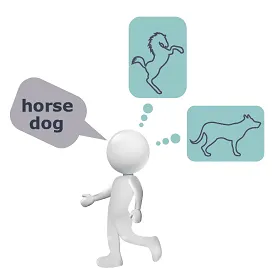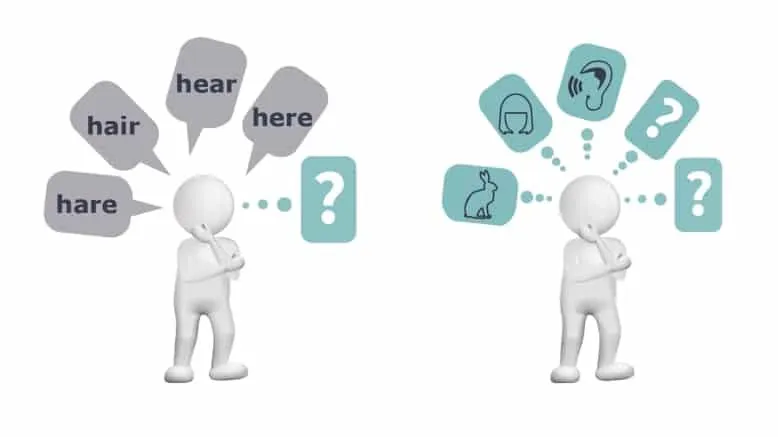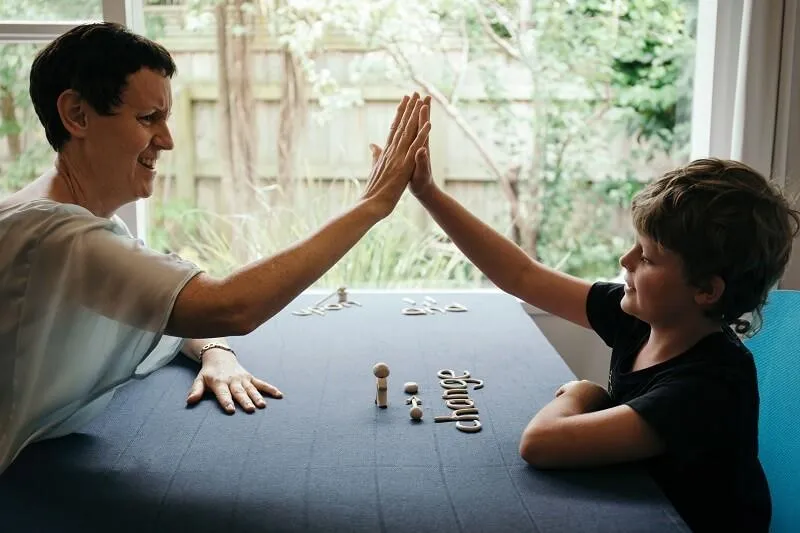What is Dyslexia?
Dyslexia is a brain difference, whereby individuals perceive 2-dimensional symbols such as the alphabet, math symbols, and musical notes from a 3-dimensional picture-thinking perspective.
These symbols, viewed from a 3-D perspective, can cause confusions for the dyslexic individual, making reading, spelling, writing, and maths difficult skills to master.
Dyslexia affects up to 20% of people
People with dyslexia tend to use a picture, visual or kinaesthetic approach to learning. They perceive life as a motion picture (movie), as opposed to the typical symbol-based approach to learning found in most schools and workplaces.
If you consider alphabet letters and maths numerals are non-picture symbols, without proper connection to the visual world, they don’t make sense to the dyslexic brain. For example, the words ‘horse’ and 'dog' have natural images associated with them, so are easy to visualise. The word ‘thing’, being a reference word, can’t be visualised and can cause confusion.
Similar confusions can happen with words that sound the same - homophones - like 'hare', 'hair', 'hear' and 'here', but are spelled differently and mean different things. These homophones are the bane of a dyslexic's world!



Related conditions
Up to 20% of people have some form of dyslexia, or a related condition such as dyscalculia (maths), dyspraxia (‘clumsy’) and ADHD (focus and attention). These are often labelled as ‘learning disabilities’. They are not disabilities, they are a far more complex style of learning, just different from what is considered the ‘norm’.
The dyslexic mind can process up to 500-1000 images a minute, resulting in verbal information being processed at incredible speed.
The 219 non-picture words in the English language can cause confusion and disorientation for picture thinkers, resulting in frustration, stress and anxiety for individuals.

‘Old Solution’ Learning Problem
Unrecognised word, symbol or concept
Incorrect data leading to mistakes
Not seeing or hearing things as they really are
Mistakes causing an emotional reaction
Emotional reaction causing shame, frustration, sadness or anger
Old learning solutions develop and repeat

A New Learning Approach…..
Unrecognised word, symbol or concept
Feeling of confusion
Identify the confusion
Implement the Davis Tools
Gain certainty
Perceive information correctly
New Learning Solution adopted and continues
Dyslexics experience a high degree of embarrassment, humiliation and shame over not being able to read, spell and write fluently.
Being caught out and exposed in school, at home, or in the workplace is the dyslexic’s worst nightmare.

From a dyslexic perspective
To get a sense of what it is like to read a sentence from a dyslexic perspective, try reading this:
A big, male rhino charged the white Landrover as it raced away over the plain to safety.
The confusion starts for a picture or visual thinker where there is no picture for a word, such as 'A', ‘the’, 'as', 'it', 'over', 'to' or ‘safety’. As a dyslexic’s picture-thinking fails to work, their stress levels and confusion increase. They tend to concentrate harder, become more tense until their brain will no longer receive accurate messages.
The resulting negative emotional reactions and increasing sense of frustration can lead to low self-esteem and the adoption of survival-based cover-up and coping solutions. Examples include day-dreaming, dependence on others, acting out, becoming the class clown or becoming quiet. An example of the confusion and disorientation dyslexics can feel when looking at 2-D symbols is like when you jump off a merry-go-round – you have stopped spinning, but the world keeps on spinning for a while. Your brain is not receiving accurate information about what is happening to you and around you. This can result in you feeling confused, dizzy, nauseous, unbalanced, even ill. You have just experienced the feeling of dyslexia!
Why is Dyslexia a Gift?
People with dyslexia are primarily multi-dimensional, visual-spatial thinkers. They have higher than average IQs, are highly creative, intuitive and excel at hands-on learning and activities.
There are many famous dyslexics, such as Leonardo da Vinci, Einstein, Thomas Edison, Alexander Graham Bell, Sir Richard Branson, Whoopi Goldberg, Pablo Picasso, Steven Spielberg, Henry Winkler, Jamie Oliver, Lee Kuan Yew, Cher and New Zealand’s own John Britten and Keira Knightley.
As dyslexics think in 3D pictures, accurately seeing and understanding 2D letters, numbers, symbols and written words can be difficult or confusing.
Dyslexics can learn to read, write and study well when they are taught unique methods that maximise their unique learning style and talents.

Want to know more?
Contact me for a free, non-obligation chat

Professional services described as Davis™, including Davis Mastery for Dyslexia®, Davis™ Symbol Mastery, Davis™ Orientation Counseling, Davis™ Mastery for Attention, Davis™ Mastery for Maths, and Davis™ Foundations for Learning Literacy may only be provided by persons who are trained and licensed as Davis Facilitators or Specialists by Davis Dyslexia Association International.
